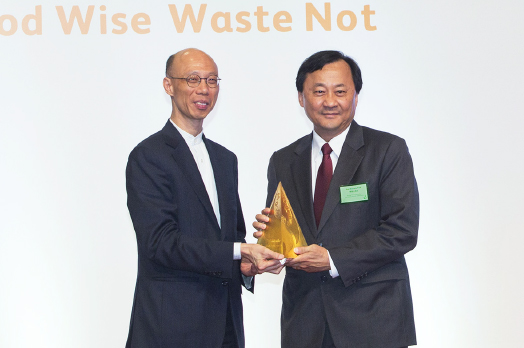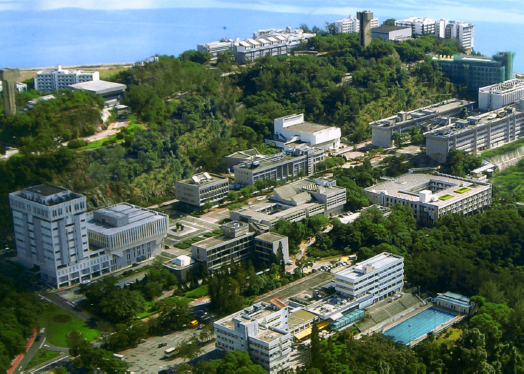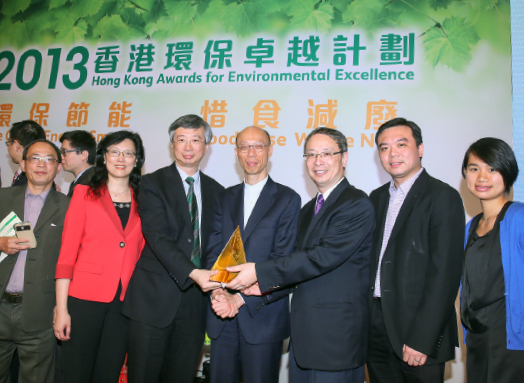
CUHK Receives Prestigious HKAEE Gold Award
The University has received the Gold Award (Public Organizations and Utilities Sector) of the Hong Kong Awards for Environmental Excellence (HKAEE). In 2009, CUHK was the first public organization to receive the award. Doing so again this year makes CUHK the only public organization to have received the award twice, and secures the University's place as a leader in building and maintaining sustainable campuses.
What Winning Means
The HKAEE is recognized as one of the most prestigious environmental award schemes in Hong Kong. Established in 2008, its goal is to encourage businesses and organizations in different industry sectors to adopt green management and innovations, and to establish benchmarks for environmental excellence.
A leader in environmental protection, Prof. Jonathan Wong of Hong Kong Baptist University, says, 'The HKAEE is the "Oscar" in the field of environmental management. The stringent evaluation is conducted by a panel of impartial judges, in order to ensure that the awardee is the "best of the best" in the sector. The awardee not only has the best performance in their environmental management, but also sets an excellent example for their peers in leading the community in working towards a sustainable environment in Hong Kong.'

Assessment Criteria
In 2013, CUHK joined 895 other institutions in the contest. The rigorous assessment process consists of three stages: provision of detailed information on the organization's green policies, practices and achievements; field assessment by a team of assessors; and finally evaluation by an adjudicating panel with members from trade associations, government departments, and professional organizations.
Green Milestones
Over the years, CUHK has not only made remarkable progress in green initiatives on campus, but greatly increased awareness of sustainability in the community through its outreach efforts. The following are some of the milestones in sustainability that CUHK has achieved since 2005:
- reduced energy use (per capita) by 18%, saving carbon emissions that would have taken 510,000 trees to absorb;
- reduced waste to landfill (per capita) by 67%;
- reduced water consumption (per capita) by 35%;
- reduced paper use (per capita) by 42% as compared to 2006 baseline;
- achieved the highest renewable energy generating capacity among local tertiary institutions

CUHK has also been a leader in designing green buildings. The Campus Master Plan of 2010 called for cutting Greenhouse Gas (GHG) emissions per capita on campus by 20% by 2025. To this end, all new buildings have been designed with a target to attain the highest ('Platinum') rating of the Building Environmental Assessment Method (BEAM) or BEAM Plus. As a result of this green building initiative, 16 new buildings have received 'Platinum' or 'Gold' rating from BEAM or BEAM Plus to date.
In addition to these measurable outcomes in energy conservation and building design, CUHK has been actively promoting green culture and encouraging attitude change on campus. The Green Office Programme ('GO!') , for example, introduces behavioural change through simple steps in everyday life, in the areas of energy conservation, waste reduction, green purchasing, and raising awareness. Since its inception in 2012, over 100 offices and student bodies, with more than 4,000 individual staff and students, have participated. The CU Green Buddies Scheme, launched in October 2013, has already had over 750 enrolments.
'To build a sustainable campus, we face challenges in terms of our size and diversity. We need a comprehensive framework to work out viable policies, appropriate plans and effective measures. Most importantly, we would like to sensitize and engage every stakeholder within our community to help build a green CUHK.'
Prof. Fung Tung, Associate Vice-President
'We consider it strategically important to go beyond formulating new policies, setting up appropriate infrastructure and applying state-of-the-art technologies. Green living is a lifestyle choice – a reflection of care for the community and for the sustainability of mankind. As a tertiary educational institution, we have launched a number of exemplary engagement and awareness programmes for our staff and students. Through Gaia's various community programmes and the Climate Change Museum, CUHK is also reaching out to schools and the public to fulfil our green mission.'
Ms Vivian Ho, Director of Campus Planning and Sustainability
'The EMO is responsible for campus operations and maintenance. However we are also tasked with the mission of creating a physical environment of professional quality, and our stakeholders certainly expect a green and sustainable campus. To accomplish this, we have adopted ISO14001 management system over the last 11 years so that all 460 colleagues are accountable for environmental protection. Annual targets and action plans (most of which are rather innovative) are being set by individual units of the EMO. Following University policies and guidelines, and with contributions from individuals, we have made progress every year, and helped the University in its efforts to achieve environmental excellence.'
Mr. Benny Tam, Director of Estates Management


